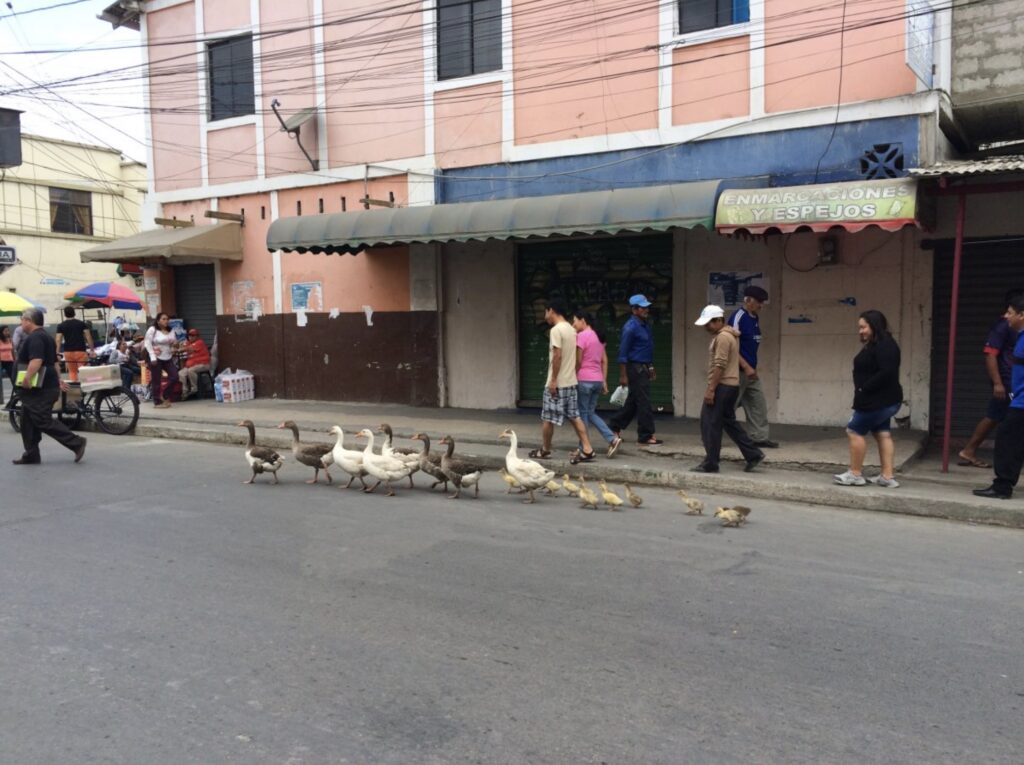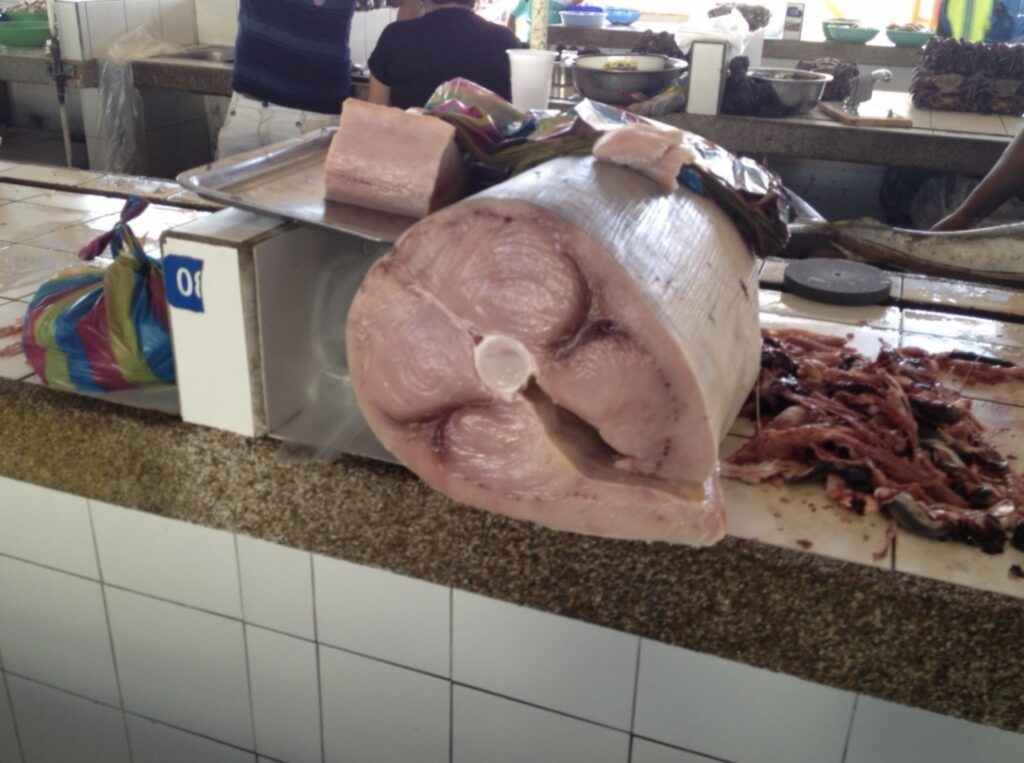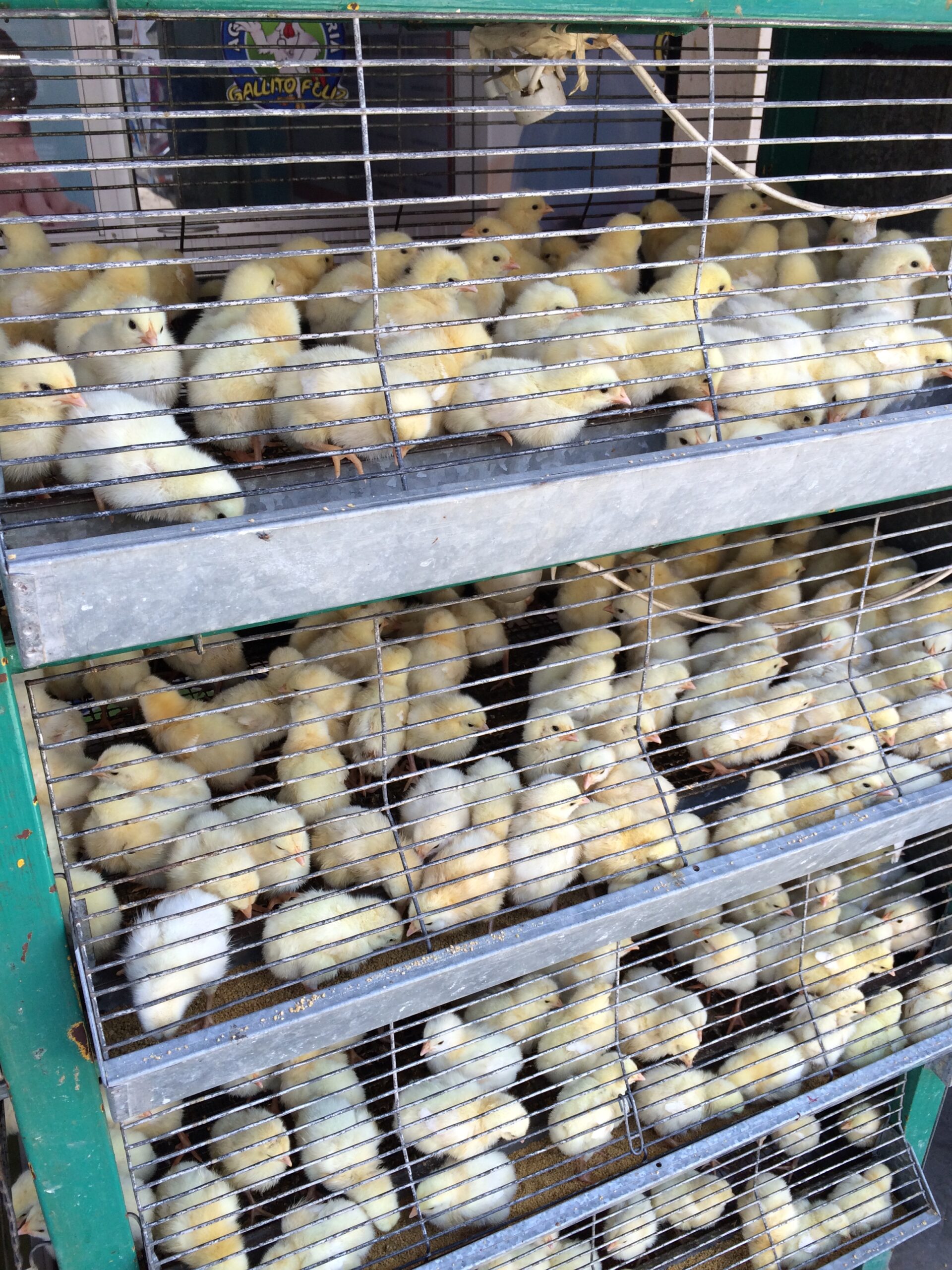One thing I really enjoy about living in Salinas, Ecuador is when we have an excuse to visit the ‘Tad. That’s what Rita and I call La Libertad, which is the next town inland from Salinas, and the commercial center of the peninsula. We love to jump on a bus and ride into the ‘Tad.
Although La Libertad is home to the modern El Paseo Mall, that is not where the action is, or where most of the locals shop. The mall is for “rich” people. Most of the business takes place in little family-run shops and stalls throughout the rest of the city.
You can buy virtually any service or merchandise you may want in the streets of La Libertad. Along the main road through the peninsula there are strings of hardware stores, automotive parts and repairs, electrical supply shops, furniture, doctors, pharmacies, clinics, plumbing supplies and lumberyards, to name but a few. There are eateries serving all manner of food, including rotisserie guinea pig if you have a hankerin’.
In the city we have had business cards made while we waited, got blood drawn and tests results the same day, and found a great shack to get oysters for $5 a quart. Actually, I can’t really call it a shack. It’s more of a lean-to with a plank across some stumps and a couple of plastic tables in an otherwise vacant corner lot, but great freshly shucked oysters!
On the north side of town, the road that runs parallel to the malecon and the ocean has a Tia store (groceries and household goods), appliance stores, electronics, government offices, banks, lawyers, copy shops, and more roast chicken than even Kenny Roger’s has seen.
But the real action, the part we really love to visit, is a street that winds up the hill to the Buenaventura Mall, and the side street that runs from about a block above it to the east, between the mercado and mercado de pescados. This section is always hopping, and probably 80% of the day-to-day commerce in the peninsula takes place there.
It’s a wild place; as it winds up hill, the sidewalks totally fail to take into account the change in altitude. Instead of being sloped, they are stepped. Sometimes not even stepped. If you are walking downhill, you have to pay attention, because the sidewalk you are walking on may suddenly stop and resume about 4 feet lower. All in all, it is better to walk in the street – like the locals do.
Although there are stores lining the streets, most of them also have their wares out on the sidewalks (another reason to walk in the street), and then there are vendors who have just setup in the streets. They may be selling food, TV and VCR remote controls, clothing – on our last trip, we passed a gentleman standing by his motorcycle, which was piled high with hundreds of handmade leather belts.
This street has beauty salons, school supplies, backpacks, shoes, musical instruments, hardware, jewelry, toys, household goods, plastics, electronics, restaurants, and even a Christmas decoration shop. It is hard to describe what a wild profusion of goods and services are on each block.
Near the top of the hill is the Buenaventura Mall. Outside is a square with more vendors, a stage for presentations, and a restaurant pavilion. Inside, it looks like a flea market and a department store had a baby, which then exploded. There are two levels of a mad conglomeration of … I can’t call them stores or even booths. Just areas where people are selling or repairing stuff. I have in the past purchased watch batteries, cell phone batteries, children’s clothing, a hat, a backpack, and shampoo. I’ve walked past the smart phone area, and watched while a guy opened up a Blackberry and started working on it with a soldering gun.
Perhaps my favorites spot is the produce and food vending blocks, heading east from the “mall”. Although there is an enclosed two-story mercado, most of the action once again is out on the streets. If you want to see how the people of Santa Elena live, this is where you go to see it. Over several square blocks, there are hundreds of vendors selling vegetables, fruits, rice, beans, cheese, eggs, milk, chicken, pork, beef, cleaning supplies, household items, baby chicks (pictured above), parakeets, farming supplies, livestock feed – it really just goes on and on.
This is where the people shop. They pay cash, no sales tax, no receipts. Most items are packaged so that they don’t need to make much change. It will be a pound of strawberries for $1, two pounds of potatoes for 50 cents, and so on. This is a place where I have never felt like I’ve been “gringo-ed”. The prices are not on display, but there is so much going on, you can always see what others are paying. And if you don’t like the price of mangoes at one stand, well here comes a guy on a bicycle with a basket full of them who will make you a better offer.

You really get a feel for how the people live when you shop La Libertad. They will buy three eggs for 25 cents, 50 cents for a little pile of veggies, $1 worth of beans and rice – just buying what they need for that day, or maybe today and breakfast tomorrow.
The fish market is also a favorite place of mine. I usually shop at the one in our Salinas mercado, but in La Libertad there is a much bigger selection of fish, crabs, shrimp, shellfish and more. You can get 4 or 5 pound tuna in Salinas, but in la Libertad they have the big ones you need an electric band saw to cut.
Rita and I really love to visit La Libertad, and always find something new there. It has been interesting in the two and a half years or so that we’ve been here, gauging other expat’s reactions to the ‘Tad. There doesn’t seem to be much middle ground. You either love it, or hate it. Some even fear it. Now it is true, we do not wear a watch or jewelry, or take out our cell phones, when we are walking around there. That’s just common sense in a big crowd. But we have never felt unsafe there. The thing is always not to stand out as a target. We are usually right in the mix, buying our goodies, chatting and asking about the wares, and paying with change or small bills like everyone else.
I’ve come to believe that the reaction to La Libertad, and to a lesser extent the bus system in Ecuador, is a good barometer for whether or not an expat is going to make it here – or at least, whether they will be happy here. If you use the buses like the locals, shop where the locals shop, and eat what the locals eat, then I think you will adjust more quickly and feel more at home than the folks who rely on cabs or hired drivers, and shop exclusively at the mall or grocery chain stores.
I’m not saying one lifestyle is any better than the other, and a lot depends on why you chose to live in another country anyway. But in our experience, if you want to be part of the real Ecuador, you gotta love the ‘Tad!



Leave a Reply